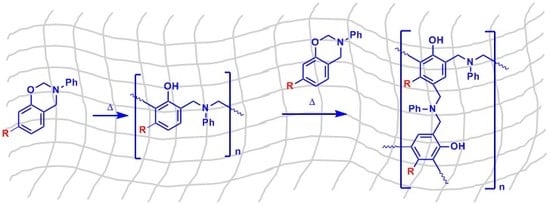Highly Crosslinked Polybenzoxazines from Monobenzoxazines: The Effect of Meta-Substitution in the Phenol Ring
Abstract
Share and Cite
Martos, A.; Soto, M.; Schäfer, H.; Koschek, K.; Marquet, J.; Sebastián, R.M. Highly Crosslinked Polybenzoxazines from Monobenzoxazines: The Effect of Meta-Substitution in the Phenol Ring. Polymers 2020, 12, 254. https://doi.org/10.3390/polym12020254
Martos A, Soto M, Schäfer H, Koschek K, Marquet J, Sebastián RM. Highly Crosslinked Polybenzoxazines from Monobenzoxazines: The Effect of Meta-Substitution in the Phenol Ring. Polymers. 2020; 12(2):254. https://doi.org/10.3390/polym12020254
Chicago/Turabian StyleMartos, Alba, Marc Soto, Hannes Schäfer, Katharina Koschek, Jordi Marquet, and Rosa M. Sebastián. 2020. "Highly Crosslinked Polybenzoxazines from Monobenzoxazines: The Effect of Meta-Substitution in the Phenol Ring" Polymers 12, no. 2: 254. https://doi.org/10.3390/polym12020254
APA StyleMartos, A., Soto, M., Schäfer, H., Koschek, K., Marquet, J., & Sebastián, R. M. (2020). Highly Crosslinked Polybenzoxazines from Monobenzoxazines: The Effect of Meta-Substitution in the Phenol Ring. Polymers, 12(2), 254. https://doi.org/10.3390/polym12020254





